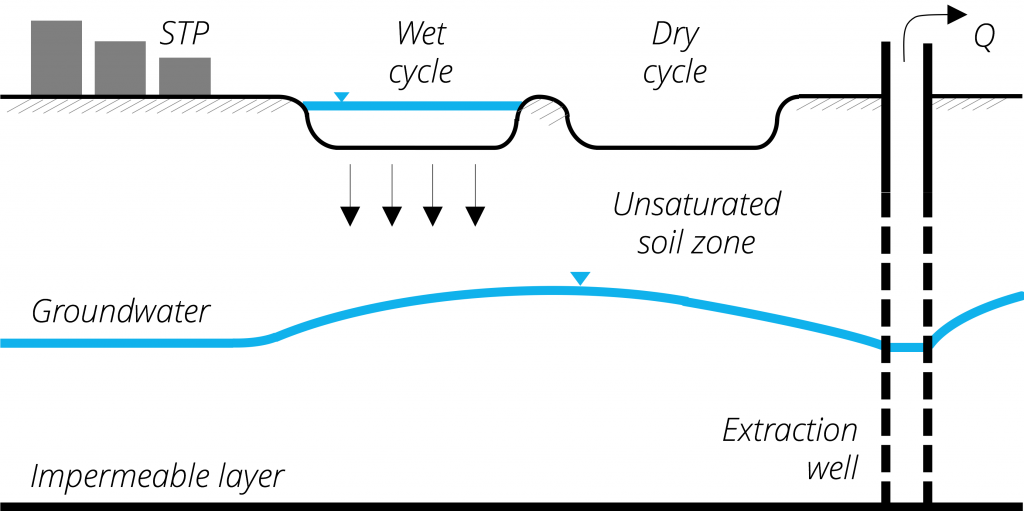
Soil Aquifer Treatment is a technology where water is recharged into the groundwater through soil percolation under controlled conditions. During percolation, natural soil filtration processes occur improving the source water quality by removing nutrients and pathogens. This technique requires unsaturated soil conditions which are achieved by intermittent surface spreading. Focus of this method is on the improvement of quality of the recharged water.
| Typical system capacity scale | Village – Town (≈104 m3/year – higher than 106 m3/year). |
| Geology | Unconfined aquifers composed of permeable sedimentary rocks. |
| Topography | Preferably flat or gentle sloped terrain but slope characteristics can be interrupted to enhance infiltration. |
| Soils | Permeable soils able to guarantee water quality standards to the target aquifer. |
| Water source | Treated wastewater, storm water. |
| Pre-treatment | Pre-treatment is required. |
| MAR main objective | Water quality improvement |
| Relative cost | Medium-high. |
Advantages and disadvantages of the system (adapted from IGRAC, 2007):
Advantages
- Reclaimed water treatment through the soil.
Limitations
- Unsaturated soil conditions need to be guaranteed.
- Processes need to be controlled to monitor quality improvement.
- High maintenance costs.
- Risk of clogging.
Case studies
References
- IGRAC. (2007). Artificial Recharge of Groundwater in the World.
- DEMEAU. (2014). Characterization of European managed aquifer recharge (MAR) sites – Analysis.
